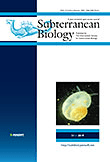
Subterranean Biology
Scope & Guideline
Bridging the Gap Between Surface and Subsurface Ecology
Introduction
Aims and Scopes
- Biodiversity of Subterranean Fauna:
The journal publishes research on the diversity of species inhabiting subterranean ecosystems, including taxa such as crustaceans, insects, and amphibians. This includes the identification and description of new species and the documentation of species distributions. - Ecological and Environmental Studies:
Research articles often explore the ecological interactions and environmental conditions of subterranean habitats. Studies may involve assessing the impact of environmental changes on cave-dwelling organisms and understanding their adaptations to extreme conditions. - Molecular Phylogenetics and Taxonomy:
The use of molecular techniques to resolve taxonomic relationships and uncover genetic diversity among subterranean species is a key focus. This includes phylogenetic studies that inform on evolutionary relationships and speciation processes. - Conservation and Biodiversity Assessments:
The journal emphasizes the importance of conservation in subterranean ecosystems, discussing threats to biodiversity and proposing measures for the protection of these unique habitats. - Citizen Science and Community Engagement:
The incorporation of citizen science in subterranean research is highlighted, showcasing how community involvement can contribute to biodiversity assessments and environmental monitoring.
Trending and Emerging
- Microbial Diversity and Functionality:
Recent studies emphasize the role of microbial communities in subterranean environments, exploring their diversity, ecological functions, and interactions with macrofauna. This emerging theme is crucial for understanding ecosystem health and nutrient cycling. - Impact of Climate Change on Subterranean Habitats:
There is an increasing focus on how climate change affects subterranean ecosystems, particularly in terms of hydrology and species distributions. Research is beginning to address the resilience of these ecosystems to changing environmental conditions. - Behavioral Ecology of Cave-Dwelling Species:
There is a growing interest in the behavioral adaptations of subterranean organisms, particularly how they navigate their dark environments and interact with their surroundings. This includes studies on foraging behaviors and sensory adaptations. - Application of Advanced Molecular Techniques:
The use of next-generation sequencing and other advanced molecular techniques is on the rise, allowing for more comprehensive assessments of genetic diversity and evolutionary relationships among subterranean organisms. - Conservation Genetics:
Research focusing on conservation genetics is emerging, with studies addressing the genetic diversity of endangered subterranean species and implications for conservation strategies.
Declining or Waning
- Traditional Taxonomy without Molecular Support:
There has been a noticeable decline in purely morphological taxonomic studies. Research is increasingly integrating molecular techniques, which offer more robust insights into species relationships, thereby reducing the emphasis on traditional morphological descriptions alone. - Generalized Ecological Studies:
Studies that do not specifically address unique ecological interactions or adaptations of subterranean species have become less frequent. The trend is moving towards more detailed ecological assessments that consider specific environmental factors and their impacts. - Broad Biogeographical Studies:
Research focusing on generalized biogeographical patterns without in-depth analysis of specific subterranean habitats or taxa is waning. The journal now favors studies that provide detailed insights into localized ecosystems and their unique faunal compositions.
Similar Journals
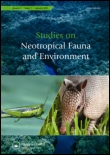
STUDIES ON NEOTROPICAL FAUNA AND ENVIRONMENT
Bridging Theory and Practice in Animal Science and EcologySTUDIES ON NEOTROPICAL FAUNA AND ENVIRONMENT is a distinguished academic journal published by Taylor & Francis Ltd, dedicated to advancing the fields of Animal Science, Zoology, and Ecology. With an ISSN of 0165-0521 and an E-ISSN of 1744-5140, this journal has been a significant outlet for scholarly research since its inception in 1976, continuing to provide critical insights into neotropical biodiversity and the environmental intricacies of this rich ecological region through 2024. Recognized in the Q3 category for both Animal Science and Ecology, the journal ranks at #232/490 in Animal Science and Zoology and #402/721 in Ecology, marking it as a valuable resource for researchers, professionals, and students interested in ecological and zoological studies. By offering a platform for innovative research and comprehensive reviews, the journal aims to bridge the gap between theory and practical application, facilitating a deeper understanding of the unique challenges and conservation strategies relevant to neotropical ecosystems. Although not an open-access journal, it plays a crucial role in fostering academic discourse and knowledge dissemination in its field, ensuring that critical advancements in understanding neotropical fauna and environmental dynamics reach a diverse and engaged audience.

Marine Biodiversity
Championing Research in Marine EcosystemsMarine Biodiversity, published by SPRINGER HEIDELBERG, stands as a pivotal journal in the fields of Aquatic Science, Ecology, Evolution, Behavior and Systematics, and Oceanography. Established in 2009, it has gained a prominent place in academic discourse, evidenced by its Q2 ranking across multiple categories in the latest 2023 assessments. The journal operates out of Germany, specifically from its Heidelberg address, and caters to an international audience with a keen interest in the vast and complex dynamics of marine ecosystems. With an ongoing convergence of research outputs until 2024, Marine Biodiversity encourages contributions that expand our comprehension of marine life and its conservation, positioning itself as a vital resource for researchers, professionals, and students alike. Although currently not an open access journal, it maintains a robust reputation backed by its favorable Scopus ranks, which indicate its significant contribution to the respective fields. By disseminating high-quality, peer-reviewed articles, Marine Biodiversity plays an essential role in promoting scholarly communication and advancement in marine science.
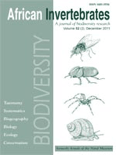
AFRICAN INVERTEBRATES
Exploring Africa's Hidden BiodiversityAFRICAN INVERTEBRATES is a distinguished open-access academic journal published by the COUNCIL NATAL MUSEUM, specializing in the study of invertebrate biology within the vibrant ecosystems of Africa. Operating since 2006, this journal has established itself as a vital resource in the fields of Animal Science, Ecology, Evolution, Behavior, Insect Science, and Paleontology, earning a strong Q2 ranking in these categories as of 2023. With its ISSN 1681-5556 and E-ISSN 2305-2562, the journal provides unrestricted access to cutting-edge research, fostering collaboration among global researchers and professionals. AFRICAN INVERTEBRATES serves not only as a platform for high-quality scholarly articles but also aims to enhance the understanding of Africa's unique invertebrate fauna and the ecological challenges they face. With a commitment to innovation and excellence, the journal is pivotal for those looking to contribute to the discourse surrounding African biodiversity and conservation strategies.
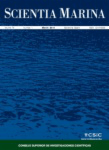
SCIENTIA MARINA
Innovating Research for Marine ConservationSCIENTIA MARINA, an esteemed journal published by the Consejo Superior Investigaciones Cientificas (CSIC) in Spain, focuses on critical studies within the fields of Aquatic Science and Oceanography. With an Open Access policy since its inception in 1998, this journal facilitates widespread dissemination of research findings, significantly enhancing accessibility for researchers, professionals, and students alike. Currently, SCIENTIA MARINA holds a Q3 ranking in both categories for 2023, demonstrating its commitment to advancing knowledge in marine and aquatic environments. With a convergence of research years from 1996 to 2024, it remains a pivotal platform for innovative research, encompassing various aspects of marine biology, ecology, and environmental science. The journal serves as an essential resource for scholars aiming to contribute to the understanding and preservation of marine ecosystems.
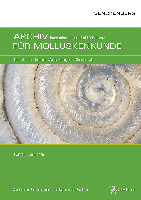
ARCHIV FUR MOLLUSKENKUNDE
Pioneering Insights in Mollusk ResearchARCHIV FUR MOLLUSKENKUNDE, published by E SCHWEIZERBARTSCHE VERLAGSBUCHHANDLUNG, is a premier journal dedicated to the study of mollusks, covering a broad spectrum of topics from taxonomy and ecology to conservation and biodiversity. With its commitment to advancing knowledge and fostering collaboration within the malacological community, this journal serves as an essential resource for researchers, professionals, and students alike. Though it is not currently operated under an open-access model, it provides valuable insights and the latest findings in the field, making it indispensable for those involved in mollusk research. Scholars can access the journal's rich repository of articles, ensuring their work remains at the forefront of scientific inquiry. The journal operates out of Stuttgart, Germany, further emphasizing its European scholarly tradition in the environmental and biological sciences.

JOURNAL OF CAVE AND KARST STUDIES
Illuminating the Mysteries Beneath Our FeetJOURNAL OF CAVE AND KARST STUDIES, published by the NATIONAL SPELEOLOGICAL SOCIETY, stands as a leading academic platform dedicated to advancing knowledge in the field of cave and karst studies. Since its inception in 1996, this journal has consistently provided high-quality research articles that explore the geological, biological, and hydrological processes associated with these unique environments. With an impact factor that situates it in the Q3 category of Earth-Surface Processes, indexed by Scopus, it ranks 97th out of 179 journals in this domain, reflecting its contribution to the field. Although open access is not currently offered, the journal's rigorous peer-review process ensures scholarly integrity and quality. Researchers, professionals, and students around the globe are encouraged to engage with the journal for the latest insights and breakthroughs, fostering a greater understanding of cave and karst ecosystems. For more information, please refer to their address in Huntsville, AL, or visit their official website for submissions and guidelines.

ORGANISMS DIVERSITY & EVOLUTION
Exploring the Threads of Life: Unraveling Diversity and EvolutionOrganisms Diversity & Evolution is a premier academic journal published by Springer Heidelberg, dedicated to advancing the fields of ecology, evolution, behavior, and systematics. Established in 2001 and continuing through 2024, this journal plays a crucial role in disseminating high-quality research that explores the complexities of biological diversity and evolutionary processes. With a commendable 2023 Scopus ranking of #253/721 in its category, placing it in the 64th percentile, and categorized in the Q2 quartile for Ecology and Evolution, it consistently attracts contributions from leading scientists and researchers worldwide. Although it operates on a subscription basis, the journal's rigorous peer-review process and dedication to impactful scientific discourse make it an invaluable resource for academics, practitioners, and students keen on understanding the intricate relationships that shape our biodiversity. By highlighting innovative research and fostering discussions on urgent ecological challenges, Organisms Diversity & Evolution serves as a vital platform for those committed to conservation and evolutionary biology.
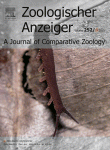
ZOOLOGISCHER ANZEIGER
Pioneering Insights into the Animal KingdomZoologischer Anzeiger is a prestigious peer-reviewed journal published by Elsevier GmbH in Germany, dedicated to advancing the fields of Animal Science and Zoology. With its consistent ranking in the Q1 category for both disciplines and a commendable Scopus rank of #165 out of 490, it stands out as a leading platform for innovative research and critical reviews in zoological sciences. The journal has been in continuous publication since 1961, navigating through different converged years, and remains a vital resource for researchers, professionals, and students aiming to deepen their knowledge and contribute to the dynamic field of zoology. Although it does not offer open access, the journal ensures that its content adheres to the highest standards of academic integrity and rigor, making it an essential read for anyone serious about animal biology and ecological studies. For research excellence and impactful scholarly discussions, Zoologischer Anzeiger is indispensable.

Fottea
Innovative insights into the world of freshwater plants.Fottea is a prestigious journal, published by the Czech Phycological Society, dedicated to advancing the field of plant sciences with a specific focus on freshwater algal research. Established in 2008, this quarterly publication has steadily gained recognition, evidenced by its impressive Q2 ranking in Plant Science and a solid placement within the 68th percentile among its peers in Scopus rankings. Fottea serves as a vital platform for researchers, professionals, and students to disseminate and access cutting-edge studies, fostering collaboration and innovation within the aquatic ecosystem research community. Although currently operating under a traditional publishing model without open access options, it remains committed to providing high-quality, peer-reviewed content that is essential for the progression of phycology and related disciplines. With its base in the beautiful Czech Republic, the journal aims to bridge local and global research efforts, contributing to the broader understanding of algal biology and ecology.

TAIWANIA
Fostering innovation in ecological sciences since 1947.TAIWANIA is a prestigious and long-standing journal dedicated to the fields of ecology, evolution, and systematics, published by NATIONAL TAIWAN UNIVERSITY PRESS. Since its inception in 1947, this open-access journal has provided a vital platform for researchers to disseminate their findings, encouraging collaboration and innovation in the ecological sciences. With a 2023 impact factor placing it in Quartile 2 for Ecology and Quartile 3 for Ecology, Evolution, Behavior and Systematics, TAIWANIA is recognized for its quality and influence, ranking #267 out of 461 in Environmental Science and #426 out of 721 in Agricultural and Biological Sciences within Scopus. The journal currently publishes contributions from both local and international researchers, showcasing a diverse array of topics that address crucial ecological issues and facilitate the advancement of knowledge in the discipline. For those seeking rigorous research, engaging reviews, and a commitment to open access, TAIWANIA remains a significant resource for the global scientific community.